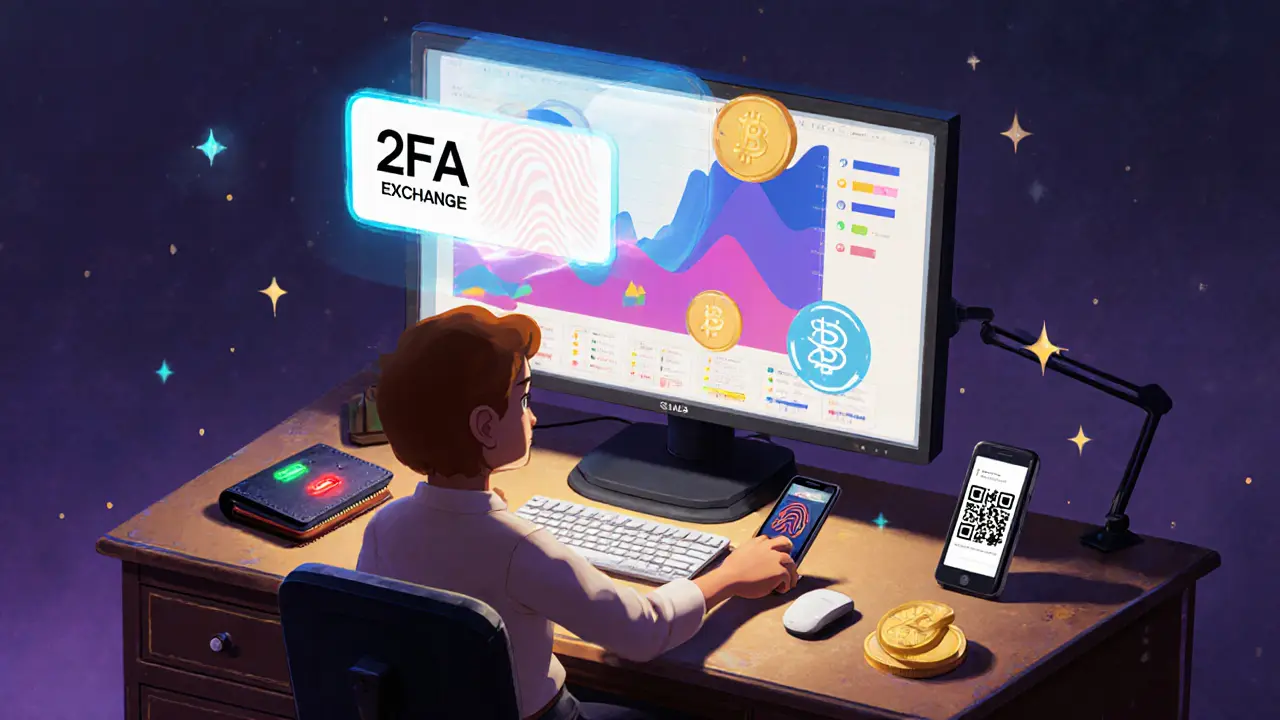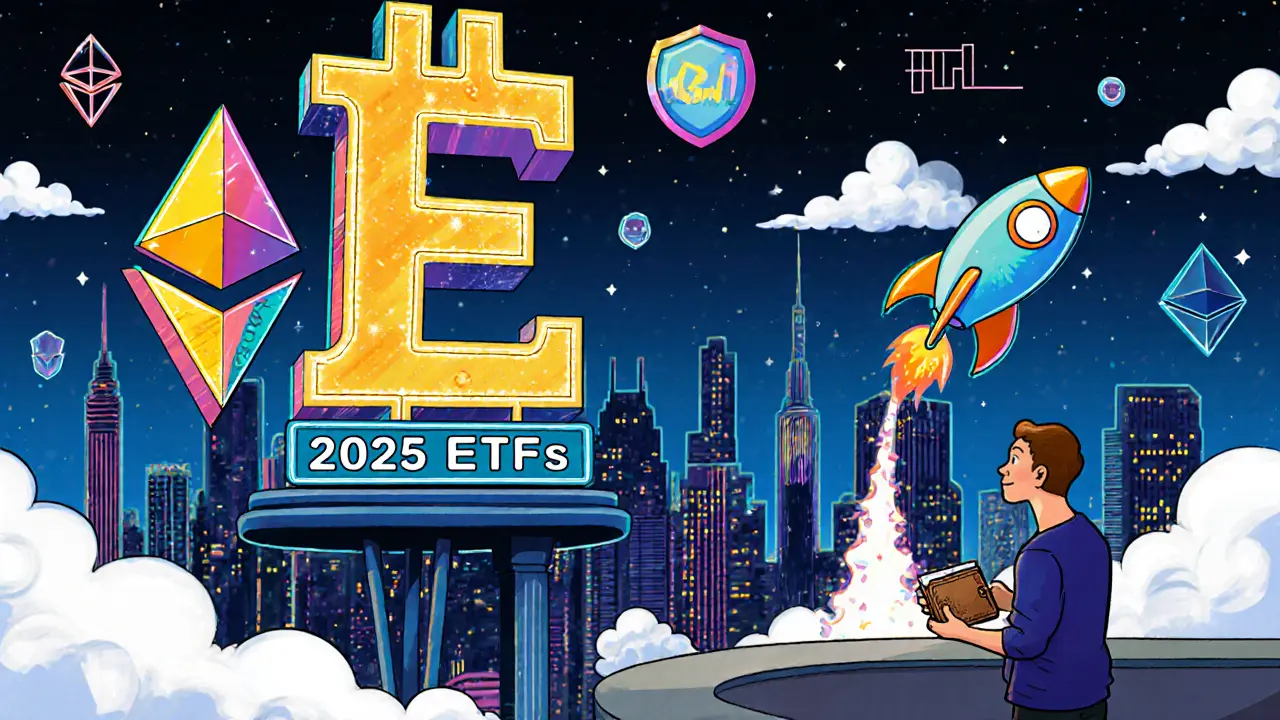Cryptocurrency Explained: The Complete Beginner’s Guide 2025

Sep, 12 2025
Crypto Transaction Fee Calculator
Imagine sending money across the globe in seconds, without a bank or a middle‑man taking a cut. That’s the promise that sparked the birth of cryptocurrency a digital or virtual form of money secured by cryptography and run on decentralized networks. Ten years later the space has exploded into a multi‑trillion‑dollar ecosystem, yet the core ideas are still surprisingly simple. This guide walks you through everything a total newcomer needs to know - from the tech that makes it work to the practical steps for buying your first coin.
Quick Takeaways
- Cryptocurrency runs on Blockchain, a shared ledger that anyone can verify.
- Bitcoin is digital gold; Ethereum adds programmable Smart contracts.
- Use a reputable Exchange (Coinbase, Binance, Kraken) to buy, then move funds to a personal Wallet.
- Never store large sums on an exchange - keep your private keys safe.
- Start with a modest allocation (5‑10% of your portfolio) and consider dollar‑cost averaging.
What Exactly Is Cryptocurrency?
At its heart, a cryptocurrency is a record of ownership stored on a public ledger. Unlike a bank account, the ledger isn’t owned by any single entity. Instead, thousands of computers - called nodes - keep copies and agree on every new transaction through cryptographic proof.
The first crypto, Bitcoin launched in 2009 as the original peer‑to‑peer digital cash system, proved that money could exist without a central authority. Today, more than 10,000 different coins trade on the market, but Bitcoin (≈40% market cap) and Ethereum a platform for smart contracts and decentralized applications (≈20% market cap) still dominate.
How Does the Underlying Technology Work?
The magic lies in the Blockchain. Think of it as a spreadsheet that’s duplicated across every node. Each new row - called a block - contains a batch of transactions, a timestamp, and a cryptographic link to the previous block. Changing any data would break the link, and the network would instantly reject the tampered copy.
Two consensus models power most blockchains:
- Proof‑of‑Work (PoW): miners solve complex math puzzles (e.g., Bitcoin) to add a block.
- Proof‑of‑Stake (PoS): validators lock up tokens as collateral and are randomly chosen to propose blocks (e.g., Ethereum’s transition to PoS in 2022).
Both methods ensure no single actor can rewrite history, giving the system its security.
Getting Your First Crypto: Step‑by‑Step
- Create an account on a reputable exchange. Coinbase is praised for its compliance and UI, though fees hover around 1.5‑4%. Binance offers 0.1% fees but requires a deeper learning curve.
- Complete identity verification. Upload a government ID and a selfie; verification typically takes 24‑72 hours.
- Secure your account. Enable two‑factor authentication (2FA) and consider a hardware security key.
- Buy your first coin. For beginners, a $50‑$200 purchase of Bitcoin or Ethereum keeps exposure low while you learn.
- Transfer to a personal wallet. Download a Wallet app (e.g., Trust Wallet) for small amounts or purchase a hardware wallet for larger holdings.
The whole process usually takes under an hour, but give yourself 1‑2 weeks to read security guides and practice sending tiny test amounts.

Types of Wallets: Hot vs. Cold
A hot wallet is connected to the internet - mobile apps, desktop clients, or web‑based interfaces. They’re convenient for daily trading but more vulnerable to phishing and malware.
A cold wallet stores your private keys offline. The market leaders are Ledger hardware wallet that secures private keys on a certified chip (e.g., Nano X at $149) and Trezor another hardware wallet known for open‑source firmware (Model T at $219). Setting up a hardware wallet takes 1‑2 hours and provides insurance‑grade protection.
Understanding Fees and Transaction Speed
Fees depend on network congestion and the chosen blockchain. Bitcoin typically charges $5‑$50 per transaction during peak times, while newer networks like Solana or Polygon cost only fractions of a cent. Ethereum’s gas fees fluctuate wildly; using layer‑2 solutions (e.g., Optimism, Arbitrum) can slash costs by up to 90%.
Speed also varies: Bitcoin confirms in ~10 minutes, Ethereum in 15‑30 seconds (post‑PoS), and Solana in under a second. Choose the chain that fits your use case - slower but secure for long‑term holding, faster for everyday payments.
Risk Management for Beginners
Cryptocurrency’s biggest draw is massive upside, but volatility is equally extreme. Daily swings of 5‑20% are common; a 80% drawdown happened during the 2022 bear market. Here are three proven habits:
- Never invest more than you can afford to lose. Most advisors suggest a 5‑10% allocation of your total portfolio.
- Use dollar‑cost averaging. Buy a fixed dollar amount every week, regardless of price, to smooth out volatility.
- Keep your private keys. As Andreas Antonopoulos warns, “not your keys, not your coins.” Store recovery phrases offline.
Diversify across a few established assets - Bitcoin, Ethereum, and maybe a low‑fee utility token - instead of chasing every new meme coin.

Regulation Landscape (2025 Update)
Governments are still figuring out how to treat crypto. The European Union’s MiCA framework (effective 2024) imposes licensing, disclosure, and consumer‑protection rules on crypto firms. In the United States, regulation remains fragmented: the SEC focuses on securities‑like tokens, while the CFTC treats many commodities as futures.
For everyday users, the practical impact means:
- Exchanges must verify identities (KYC) and report large transactions.
- Tax reporting is mandatory; most jurisdictions treat crypto as property.
- Some countries (e.g., China) have banned domestic crypto trading altogether.
Stay updated via official regulator newsletters or reputable news sites.
Comparison of Major Cryptocurrencies
| Coin | Primary Use | Consensus | Avg. Transaction Fee (2025) | Typical Speed |
|---|---|---|---|---|
| Bitcoin | Store of value / digital gold | Proof‑of‑Work | $5‑$50 | ~10 min |
| Ethereum | Smart contracts / dApps | Proof‑of‑Stake | $0.01‑$0.20 (layer‑2 $0.001) | 15‑30 s |
| Solana | High‑throughput apps | Proof‑of‑History + PoS | $0.00025 | ~0.4 s |
| Polygon | Ethereum scaling | Proof‑of‑Stake | $0.001 | 2‑3 s |
Future Outlook
2025 saw the launch of Bitcoin and Ethereum ETFs in several markets, giving retail investors a regulated entry point. Layer‑2 solutions are cutting Bitcoin fees by 90%, and Ethereum’s upcoming sharding could boost throughput a thousand‑fold by 2026. Analysts at ARK Invest even project Bitcoin hitting $1 million by 2030 if adoption stays on its current trajectory.
However, risks linger: regulatory crackdowns, potential bugs in smart‑contract code, and environmental concerns around PoW mining. A balanced approach - modest exposure, solid security habits, and continuous learning - remains the safest path.
Frequently Asked Questions
What is the difference between a coin and a token?
A coin runs on its own blockchain (e.g., Bitcoin, Ethereum). A token lives on another blockchain and uses its underlying protocol (e.g., USDT on Ethereum).
Do I need a hardware wallet if I only own a small amount?
For tiny balances (under $200) a reputable mobile wallet with strong 2FA can be sufficient. Once you cross that threshold, a hardware wallet greatly reduces theft risk.
Are crypto transactions really irreversible?
Yes. Once a transaction is confirmed on the blockchain, it cannot be undone. Double‑check addresses before sending.
How do taxes work on cryptocurrency?
Most countries treat crypto as property. You owe capital‑gains tax on any profit when you sell or exchange it. Keep detailed transaction records for year‑end reporting.
Is Bitcoin a good long‑term investment?
Historically Bitcoin has delivered >100% annualized returns, but it also experiences severe drawdowns. It can be a hedge against inflation if you can stomach the volatility.
By now you should have a solid grasp of what cryptocurrency is, how it works, and what steps you need to take as a beginner. Remember: the technology is still evolving, so stay curious, keep security first, and only invest what you can afford to lose.